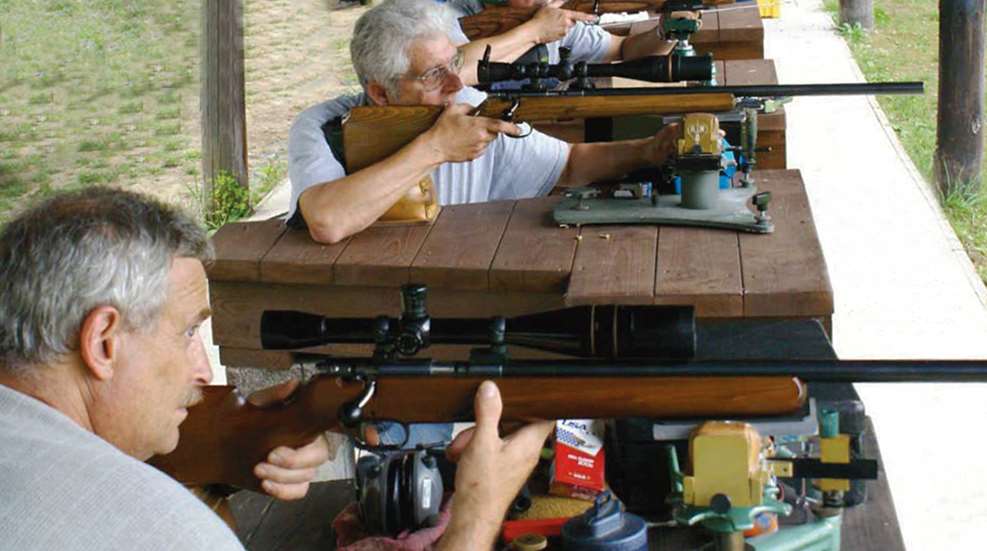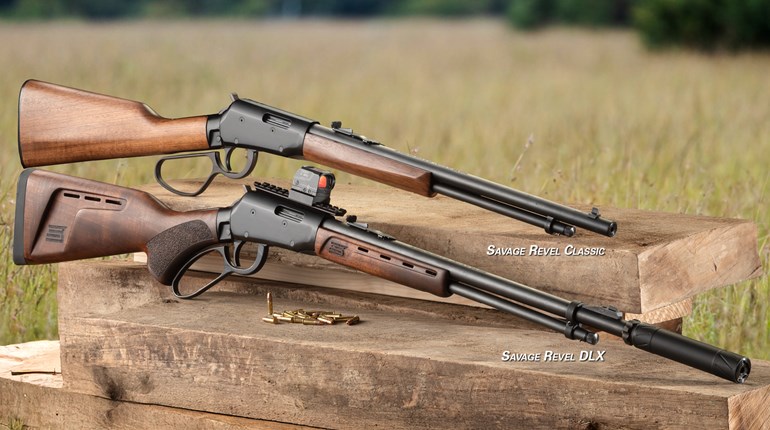
It began innocently enough. Benchrest competitor Dick Johnson, who often helps me with air gun testing, had been needling me for months to visit the Pine Tree Rifle Club in Johnstown, NY, to try my hand at .22-rimfire benchrest competition. “It’s fun,” he said. “You’ll like it.”
He was right, .22 benchrest is fun. There are some obvious reasons for this. Guns and ammo for .22 rimfire are readily available and benchresting fits the definition of a great game: It takes a minute to learn and a lifetime to master. And, depending on the club holding the competition, .22 benchrest can accommodate a wide range of shooters—from those of modest means (like me) to those for whom money is no barrier in the quest for accuracy.
How formal or informal the competition is will depend on the local club. Ron Elbe is a very serious .22 benchrest competitor who shoots at the Oak Hills Gun Club in Blue Grass, IA. His club is affiliated with the American Rimfire Association. They shoot formal, sanctioned matches with full-out benchrest rifles. But at the same time, they also shoot informal benchrest matches at 25 yards that are divided into three classes: Sporter (under 7.5 lbs for rifle and scope), Vintage (for older target rifles), and Semi-auto for Model 1022 Rugers and the like. Elbe says, “The whole idea is to expose ‘plinkers’ and squirrel hunters to the fun of high accuracy competition.”
There is a wild card in all of this. Some clubs that hold benchrest competitions are not affiliated with any national organization, so if you are looking to give .22 benchrest a try, some phone calls to local clubs in your area or Google searches are definitely in order. You might discover an excellent place to shoot that does not show up on any national roster.
Pine Tree Rifle Club, where I shot, is one of those. Unaffiliated though it may be, it’s still a very special place. It was at Pine Tree on Labor Day weekend in 1947 that Harvey Donaldson said “only accurate rifles are interesting.” Colonel Townsend Whelen and Donaldson helped to create the National Bench Rest Shooters Association. So, in a sense, you could say that Pine Tree is the birthplace of American benchrest competition—hallowed ground, indeed.
For a variety of reasons, people stopped shooting benchrest at Pine Tree by the late 1980s. In 2001, with the help of donations and challenge matches, John Del Savio, a member of the Pine Tree Board, restored the range and brought back the matches. In 2007, the first rimfire benchrest league kicked off with, appropriately, 22 contestants. The next year, participation rose to 30 shooters and the year after that 38 contestants shot rimfire benchrest at Pine Tree.
Starting on the first Monday in May, they shoot 18 matches each Monday night. They have three classes. Squirrel class is for sporting rifles and is shot at the benchrest target used for 100-yard score matches. There are five bulls and one sighter bull. Five shots are taken at each bull. Target class is for target or purpose-built benchrest rifles and is shot at the IBS rimfire target. There are 25 score bullseyes with one shot taken on each. Anyone who finishes the league season with an aggregate score of 2400 or above for 10 matches is automatically kicked into the Master class for the following year. “The whole idea is that everyone has fun, learns something, and walks away with something at the end of the year,” says Del Savio. Judging by the rising participation, it’s a formula that appears to work.
So let’s take a look at the bare minimum of what you need to shoot .22 benchrest. Bear in mind that the shooters who are serious about being competitive on a national level bring a lot more gear than the modest list below.
A .22 rifle. When I arrived at the shooting line at Pine Tree Rifle Club with 38 other competitors, there was an incredible array of .22s on display. Near one end of the line, one competitor was dialing-in a semi-automatic of some sort. Next to me, Dick Johnson and a couple of his friends were shooting Anschutz match rifles that had been scoped for benchrest. Further down the line, purpose-built .22 benchrest rifles with barrel tuners and custom stocks were in evidence. And for me—I brought to the line a $300 Russian-built Izhmash Biathlon Basic sporter rifle. The bottom line is: Depending on the club where you want to shoot, you can spend as much as you like on a .22 benchrest rifle, from a few hundred dollars for a sporter to three kilobucks or more for a superbly accurized custom bench rifle.
Ron Elbe said, “Rimfire is not as accurate as centerfire. Typically, if you can shoot five-shot groups at 50 yards that are under .25 inch CTC, you have a really good gun.” He adds that there are a couple of advantages of rimfire over centerfire: “You get to shoot more; you don’t have to invest time in reloading ammunition; and you only need 50 yards to practice.”
Ammunition. Here again you can spend as much as you want, but the dictum “let the rifle choose the ammunition” clearly applies. Dick Johnson and I both shoot the same $10-a-box RWS Target Rifle ammunition, but other competitors I have spoken with routinely spend a small fortune on Lapua Exacta match ammunition, adding up to thousands of dollars on ammo during the course of a season.
Rests. The variety of rests that shooters use for .22 benchrest is mind-boggling. Many of the more serious competitors were using professional rests; some with special plates attached to them to aid in allowing their rifles to free recoil. Others were using sandbag rests. To my right, a fellow shooting an Anschutz biathlon rifle had engineered his own rest using an automotive scissors jack. Since this was my first-ever benchrest match, I showed up with no rests, so a couple of club members helped me improvise with a couple of rear “bunny” bags and scraps of wood.
Wind flags. Once you have a good rifle, ammunition and rests, the big challenge in .22 benchrest is reading the wind. That’s where wind flags come in. Competitors at Pine Tree Rifle Club used everything from a bit of surveyor’s tape tacked to a dowel, to plastic flags pivoting on bearings, to ultra-sophisticated “wind indication devices” that showed both wind direction and some indication of its strength. They all shared one thing in common: They were brightly colored and, as the shooters placed their flags in their lanes, the field of fire started to look like a county fair.
Targets. The targets that you shoot at for benchrest competition will be a direct result of which, if any, national benchrest organization your club is affiliated with. Universally, though, .22 benchrest competitions are based on shooting for score rather than shooting for group.
A place to shoot. If you visit www.benchrest.com, you’ll find that there are several organizations that sponsor .22 benchrest competitions. These include:
- American Rimfire Association
- USRA-IR50/50
- United States Bench Rest
- Rimfire Benchrest Association
- Professional Shooting League
- World Rimfire and Air Rifle Benchrest Federation
If you’re curious about what happened in my match, here’s the scoop. Shooting in the Squirrel class, I quickly discovered that I wasn’t much good at reading the wind, but the thing I really needed to pay attention to was managing my technique while shooting off the two bunny bags. While others might allow their rifles to free recoil, I employed a ninja “death grip” with laser-beam focus on follow-through. At the end of the day, when the scoring was completed, I had fired a 248/250 with 13 X’s.
Will I shoot .22 benchrest again? You bet! And maybe, just maybe, I’ll look down the firing line and see you there, experiencing the fun of chasing accuracy with a .22.


































